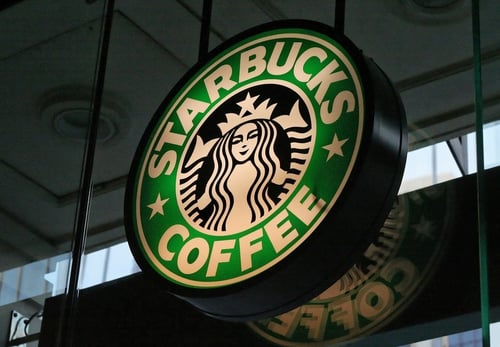Starbucks: A Case Study for Our Disciplined Process

On more than one occasion in recent years clients have written us about investing in Starbucks, the trendy coffee chain with locations in seemingly every city and town across the United States. Though Starbucks is the coffee shop of choice for some of us at Altrius, we believe that mistaking a company for the products it sells can trap investors into overpaying for its shares (for more on this, head over to our McDonald's vs. Shake Shack blog post) and have thought it expensive until recently. Previously trading at over 30 times trailing earnings with a dividend yield of around 1.5% - less than half that of our Disciplined Alpha Dividend strategy - Starbucks has remained outside of our value discipline in past years. However, the company caught our attention after a recent selloff and we added it to our portfolios in early August.
As our clients well know, we follow a disciplined investment process based on three pillars which we believe position us for superior risk-adjusted performance over the long-term. Though we don't employ a mathematical formula, most equities in which we invest contain each of the following characteristics:
- Global growth potential: opportunity to generate revenue and earnings growth both domestically and internationally
- Dividend history and growth: record of steady dividend growth likely to continue into the future
- Value: price we believe to be below the company's intrinsic value with an adequate margin of safety
Starbucks is no exception to these criteria and we'd like to highlight this new addition to our portfolios as a case study of our investment philosophy in practice.
Global Growth Potential
Though it's headquartered in Seattle, we hesitate to label Starbucks an American company. While 68% of its revenues were generated in the Americas over the trailing twelve month period ending in June, this figure is down from 74% over the same period five years ago, but not for lack of domestic revenue growth, which has continued at 9% annually. Instead, Starbucks has been rapidly expanding into overseas markets, particularly China and Asia Pacific (CAP), which has seen annualized revenue growth of 37% over the past five years and is approaching one-fifth of the company's total revenues. In China alone, the number of company-operated stores has tripled during this time period, versus only 3% annual store growth in the Americas.
The CAP segment is largely driven by China, where the middle class is expected to double to 600 million by 2022 and will drive coffee consumption in the region. Additionally, mobile retail penetration has taken hold in China at a much higher rate than it has in Starbucks' home market. The Chinese make 80 times more mobile payments per year than Americans, opening the flood gates to brand interaction opportunities as Starbucks can collect customer information through these mobile payment platforms and use it to craft personalized advertising campaigns and deepen customer engagement. To capitalize on this growth opportunity, the company has unveiled plans to double its store count in China to over 6,000 by 2022, opening a new store every 15 hours as it expands into 100 new cities with a combined population nearly 100 times greater than that of Los Angeles.
As a result of this growth strategy in China, Starbucks' operations in the region may conceivably overtake the scale of its business in its home market within the coming decade.
Dividend History and Growth
While we search for companies with histories of steady dividend payments, more important to our clients are future dividend growth prospects in order to provide income through the market's cyclical perturbations. Starbucks has such potential, having paid a dividend each quarter since early 2010 and grown its payout by 27.5% per year. Additionally, the company recently announced a 20% dividend hike that will take effect in the third quarter of 2018.
Though its yield has remained below the 2% level for most of the past eight years, Starbucks recently eclipsed this threshold after its sharp price drop and its yield sat just below 2.8% when we added the stock to our portfolios.
Value
Our clients have undoubtedly heard us say that we treat each investment as if we were purchasing ownership in a business rather than simply buying a stock certificate. The most important factor that determines whether we'd like to own a piece of a business is the price at which we can acquire it. We avoid companies trading at astronomical valuations and firmly believe that every business has a price below which it becomes an attractive investment.
Though far from the only metric we consider, a company's price to earnings ratio gives us a strong indication as to how the market values a given security. Over the past four years, Starbucks has traded at a price to earnings ratio of around 30, well above our Global Income strategy's average of 14, suggesting that investors have been willing to pay a high premium for the company's shares. However, following its 15% selloff at the end of June, we purchased Starbucks at 16 times trailing earnings, a multiple we view as an attractive discount to the company's fundamental value.
We recognize that adhering to the minutiae of our investment philosophy would force us to eliminate almost every potential investment opportunity. Investing is more of an art than a science and one cannot utilize a formula to guarantee investment success, although plenty will try to sell you such a system. Every investment entails risk, but we believe that investing in companies with global revenue growth potential, steady dividend histories, and attractive valuations better enables us to manage this risk and has been the primary reason for our success over the past two-plus decades since our firm's founding. Following its recent selloff, we believe Starbucks now fits our disciplined process and presents a more than sufficient margin of safety for our clients.
Click to Download Our Starbucks Presentation to Learn More!


